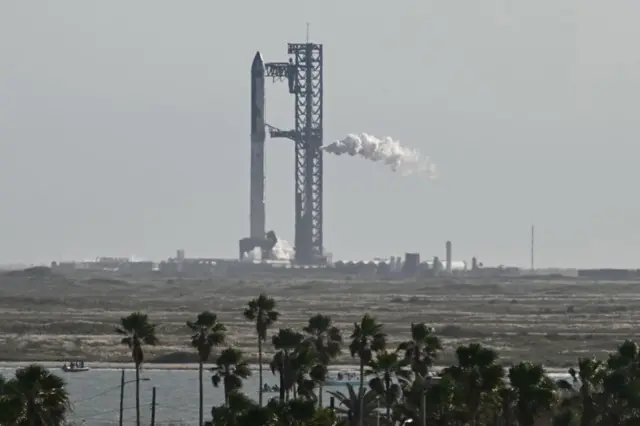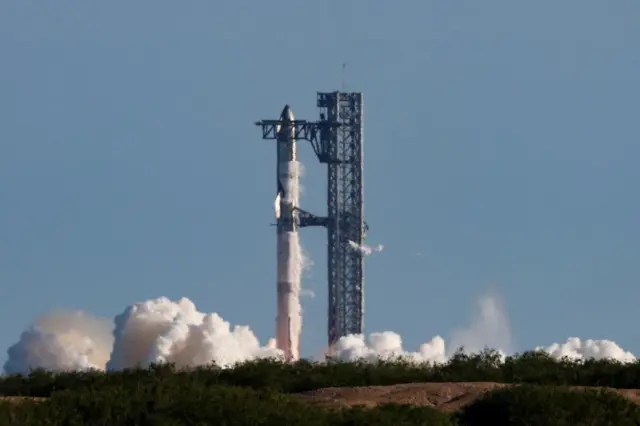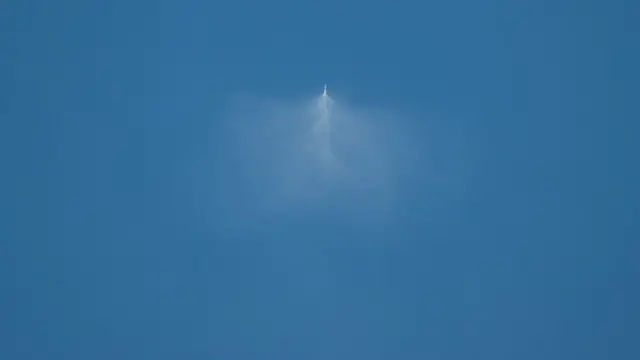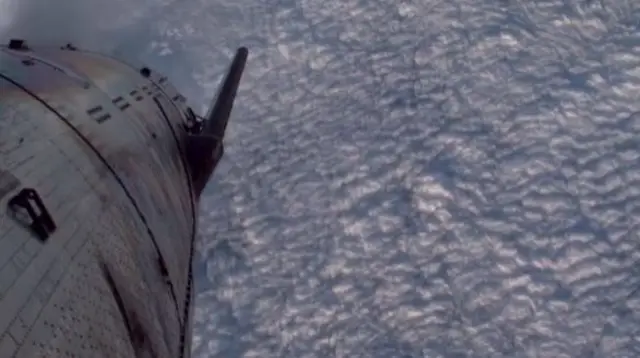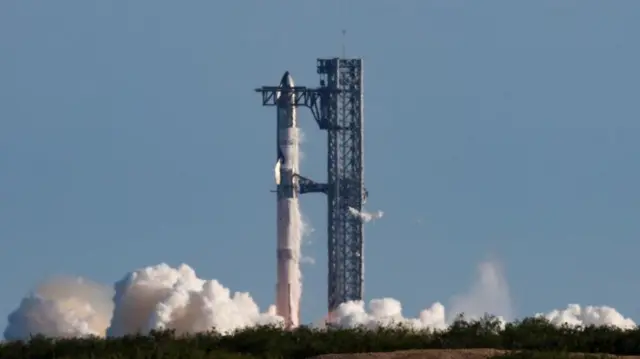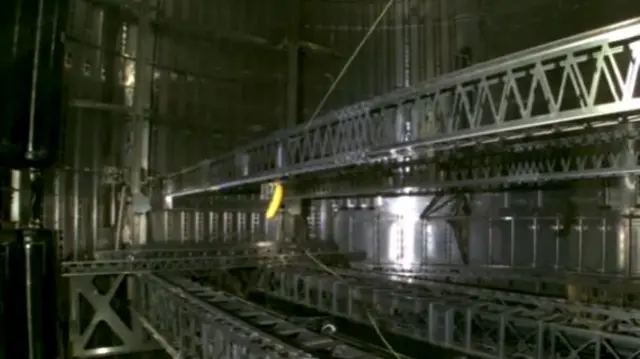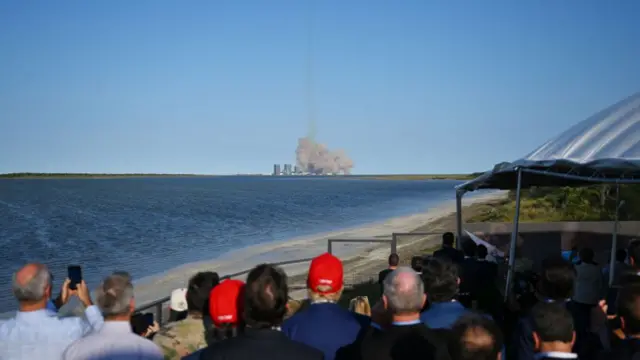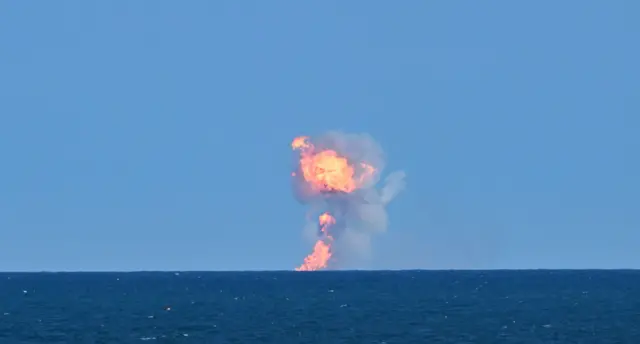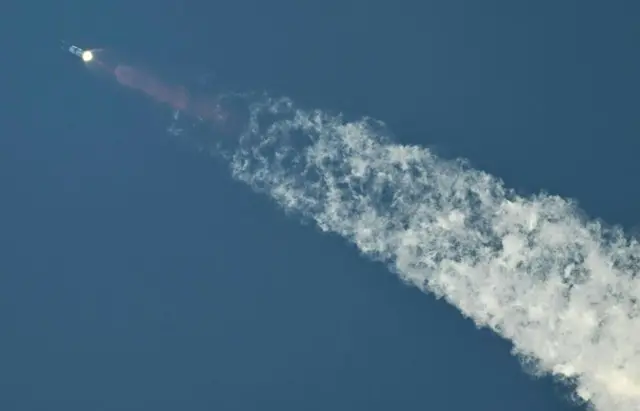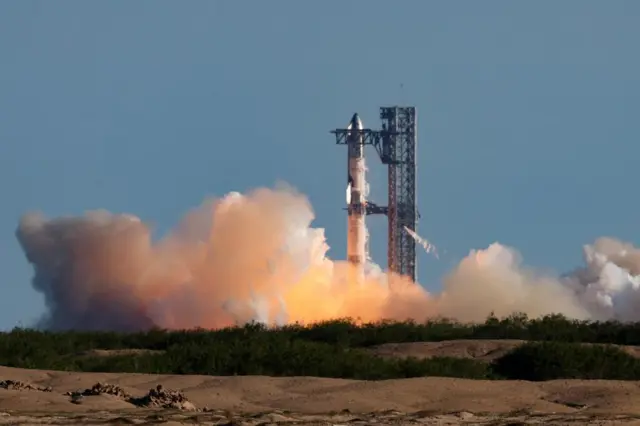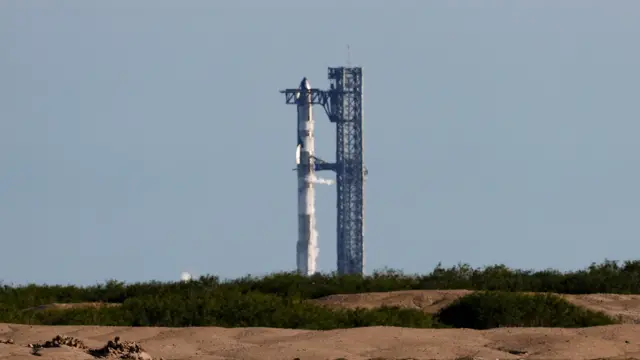SpaceX successfully launches Starship, but no 'chopstick' catch this timepublished at 23:46 GMT 19 November 2024
 Brandon Livesay
Brandon Livesay
Live editor
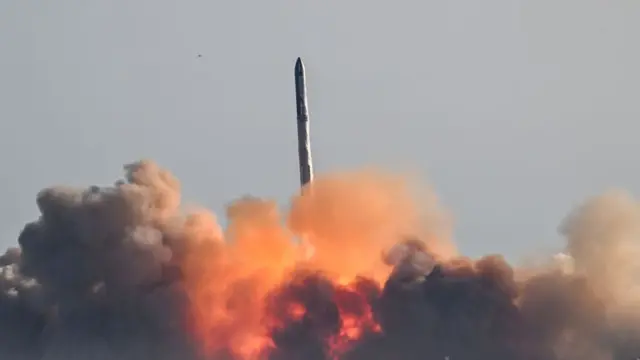 Image source, Getty Images
Image source, Getty ImagesThe sixth test flight of SpaceX's Starship was a mixed bag of success along with some disappointment.
With President-elect Donald Trump at the launch site in Texas with Elon Musk, the rocket blasted into the sky right on time and surged above the Earth.
The two sections of the rocket splashed down in opposite sides of the world, the Heavy Booster in the Gulf of Mexico and the Starship in the Indian Ocean off the coast of Australia.
But we did not see the remarkable pincer-like "chopstick" catch of the booster, which was achieved during the fifth test flight.
A safety parameter was not met, so the catch of the booster was aborted.
We're wrapping up our live coverage of the test flight, but you can watch the moment of the launch at the top of this page.
Thanks for joining us.
